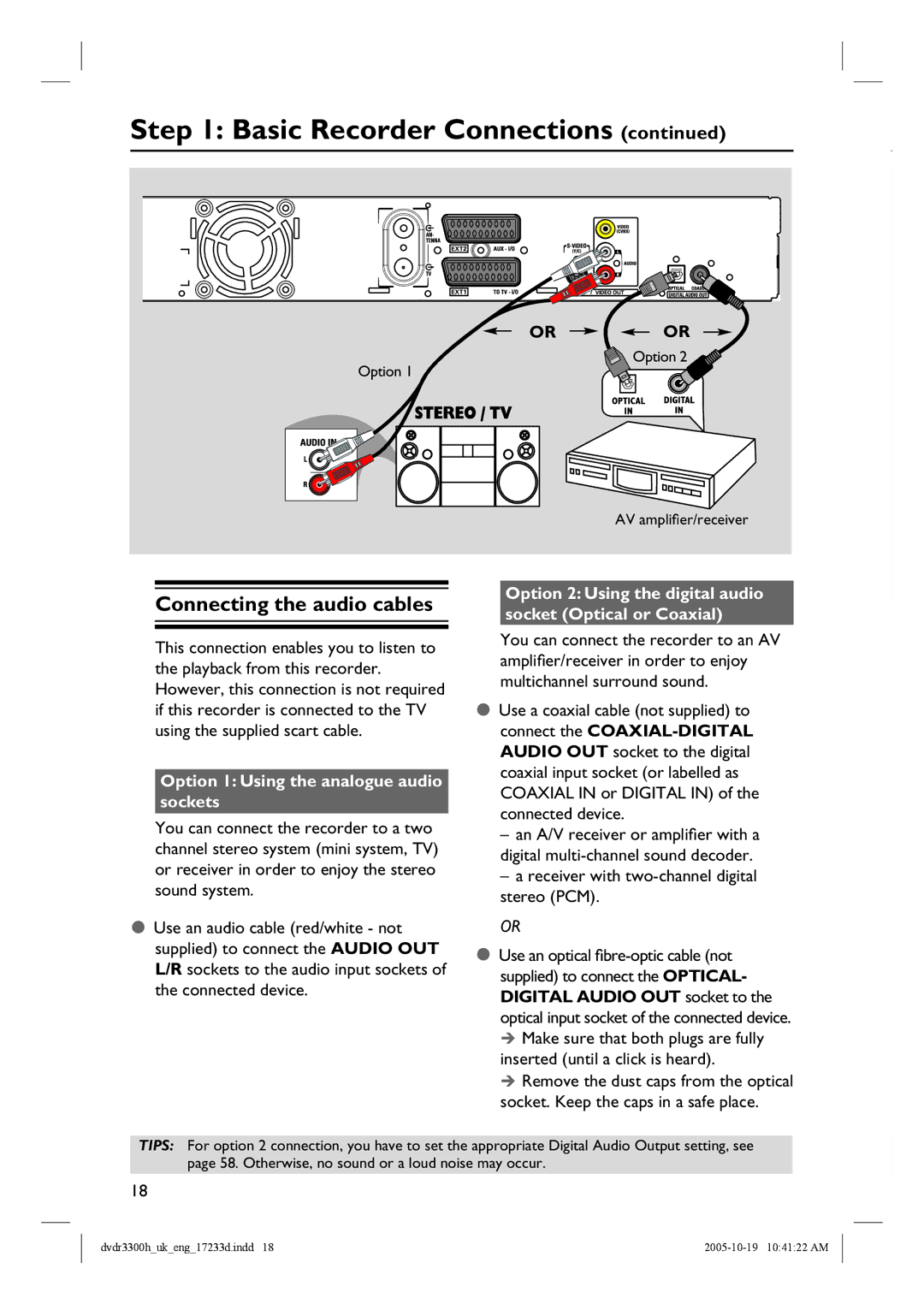
Step 1: Basic Recorder Connections (continued)
OR 
 OR
OR
Option 2
Option 1
AV amplifier/receiver
Connecting the audio cables
This connection enables you to listen to the playback from this recorder. However, this connection is not required if this recorder is connected to the TV using the supplied scart cable.
Option 1: Using the analogue audio sockets
You can connect the recorder to a two channel stereo system (mini system, TV) or receiver in order to enjoy the stereo sound system.
Use an audio cable (red/white - not supplied) to connect the AUDIO OUT L/R sockets to the audio input sockets of the connected device.
Option 2: Using the digital audio socket (Optical or Coaxial)
You can connect the recorder to an AV amplifier/receiver in order to enjoy multichannel surround sound.
Use a coaxial cable (not supplied) to connect the
–an A/V receiver or amplifier with a digital
–a receiver with two-channel digital stereo (PCM).
OR
Use an optical
Make sure that both plugs are fully inserted (until a click is heard).
Remove the dust caps from the optical socket. Keep the caps in a safe place.
TIPS: For option 2 connection, you have to set the appropriate Digital Audio Output setting, see page 58. Otherwise, no sound or a loud noise may occur.
18
dvdr3300h_uk_eng_17233d.indd 18 |
